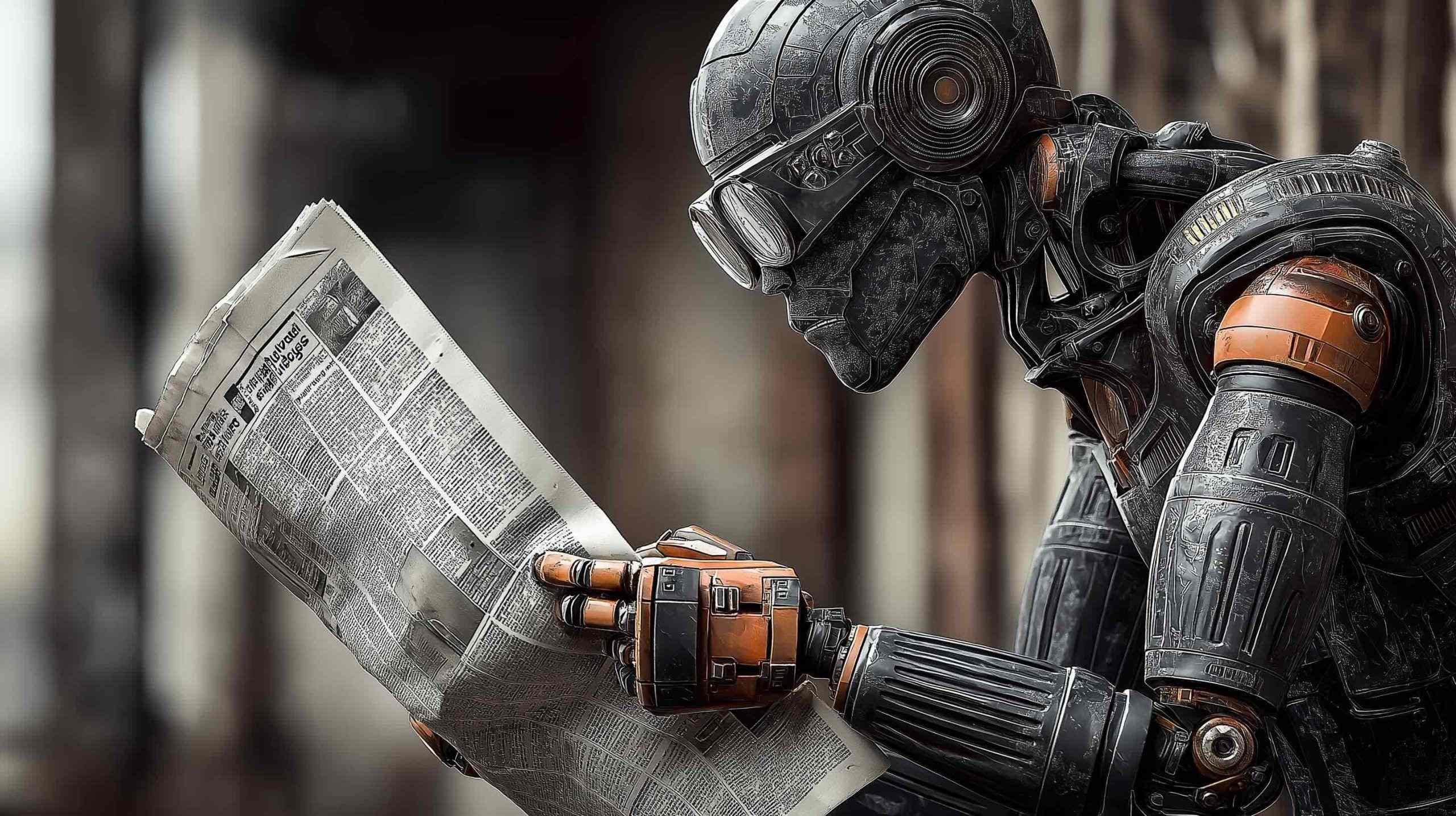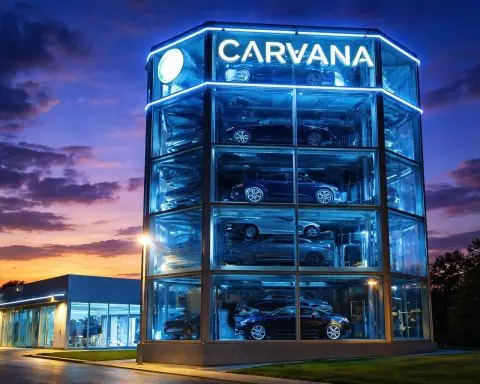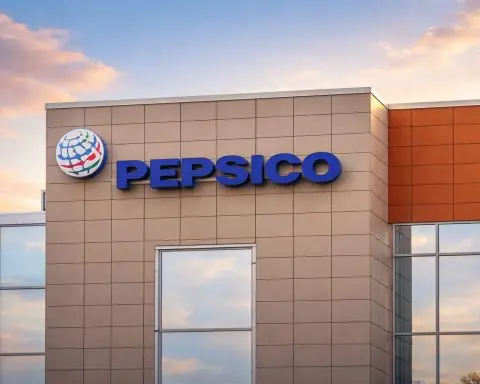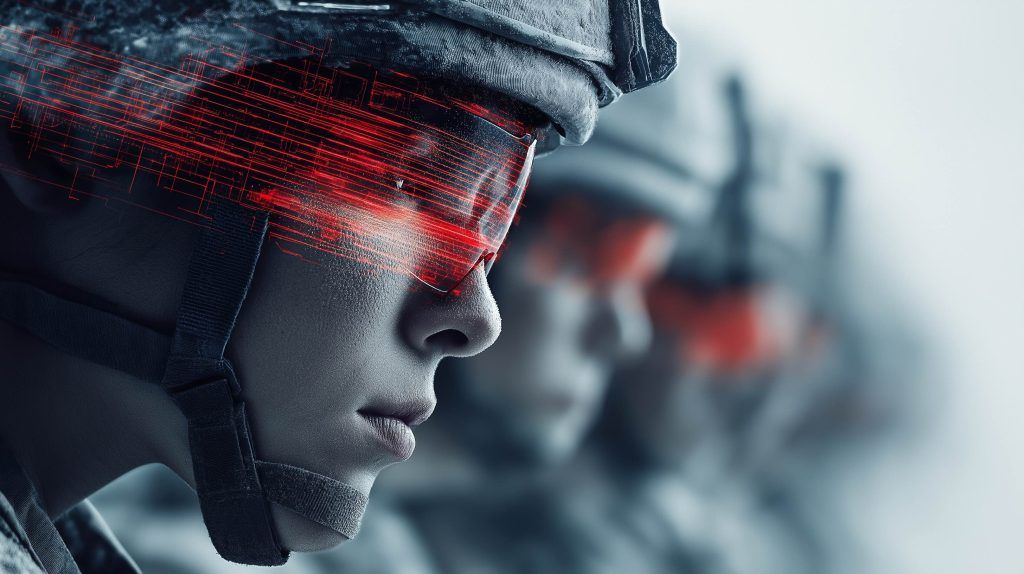- On July 17, 2025, OpenAI introduced ChatGPT Agent, a proactive AI assistant that can autonomously carry out multi-step tasks within a secure virtual computer environment for ChatGPT Plus, Pro, and Team subscribers.
- ChatGPT Agent can switch between web browsing, running code, plugins, and accessing Connectors to fetch emails from Gmail and files from GitHub to complete tasks.
- Early benchmarks show ChatGPT Agent achieved a 41.6% score on Humanity’s Last Exam.
- Sora, OpenAI’s text-to-video model, became broadly available in July 2025 within ChatGPT Plus and Pro, enabling up to 10-second 720p videos for all users and 20-second 1080p videos for Pro users with watermark-free downloads.
- As of July 2025, Sora was unavailable in Europe and the UK due to regulatory and safety considerations, with no rollout timeline.
- On July 9, 2025, OpenAI announced it acquired io Products, Inc., Jony Ive’s design firm, in a deal worth nearly $6.5 billion in stock, bringing Ive and LoveFrom into OpenAI.
- The Ive partnership is intended to reinvent consumer AI interfaces by merging ChatGPT’s AI tech with new hardware devices, with rumors of a voice-first AI assistant device.
- On July 18, 2025, OpenAI announced a $50 million AI for Good fund to support frontline and mission-based nonprofits addressing education, healthcare, and economic opportunity.
- Sam Altman announced on July 12, 2025 that OpenAI would delay the release of an open-weight model to conduct additional safety tests.
- DALL·E 3 images now include C2PA metadata indicating AI authorship, OpenAI joined the C2PA steering committee, and plans exist to extend this provenance to Sora.
July 2025 has been a whirlwind month for OpenAI’s generative AI endeavors. From game-changing product launches and bold partnerships to serious safety initiatives and policy moves, OpenAI has been pushing the frontier of AI – and sparking plenty of expert commentary along the way. Below we roundup all the major news and developments, with insights from industry leaders on what it means for the future of AI.
ChatGPT Gets an Agentic Upgrade – And It’s Like Having an AI Assistant for Everything
OpenAI kicked off July with a major product launch: the introduction of ChatGPT “Agent” on July 17. This upgrade transforms ChatGPT from a static chatbot into a proactive AI assistant that can think and act on a user’s behalf Openai Openai. In practical terms, users can now ask ChatGPT to carry out complex, multi-step tasks – from conducting research and writing reports to browsing websites, managing calendars, and even making online purchases – all autonomously within a secure virtual computer environment Openai Openai. OpenAI describes the new agent as “a unified agentic system” that combines the best of its earlier experimental tools (the web-interacting Operator and the analysis-focused Deep Research) with ChatGPT’s conversational intelligence Openai Openai.
What ChatGPT Agent Can Do: With “Agent” mode enabled (now available to ChatGPT Plus, Pro, and Team subscribers), the AI can fluidly switch between browsing the web, running code, using plugins, and accessing connected apps to get things done Openai Openai. For example, users can simply describe a goal, and ChatGPT will break it down and execute it step by step – narrating its actions on screen – until completion Openai Cybernews. Some capabilities highlighted by OpenAI and testers include:
- Web automation: Visually browsing websites, clicking buttons, filling forms, and scraping information, even handling logins securely Openai Openai.
- Coding and analysis: Using a built-in terminal to run code, analyze data, or generate charts and slide decks based on instructions Openai Openai.
- Integrated apps: Via new Connectors, the agent can plug into services like Gmail or GitHub to fetch emails, files, and other data relevant to a query Openai Openai.
- End-to-end task execution: Planning workflows and executing multi-step plans (e.g. “research my competitors and draft a slide presentation on their strengths”) without user micromanagement Openai Cybernews.
OpenAI boasts that ChatGPT Agent represents “a new level of capability for AI systems”, able to autonomously produce results that previously required chaining multiple tools Cybernews. Notably, early benchmarks show it achieved state-of-the-art performance on broad reasoning tests (e.g. a 41.6% score on the challenging “Humanity’s Last Exam” benchmark, beating previous models) Cybernews. “I think 2025 is the year we go from ChatGPT being a super smart thing that can answer questions to ChatGPT doing things in the real world,” one tech executive remarked, capturing the industry’s excitement Em360Tech.
Safety First, Even on the Cutting Edge: Alongside the fanfare, OpenAI has been candid that this powerful new agent comes with new risks. By giving ChatGPT the ability to take actions (like writing code or browsing the web), the system could potentially be misused or make mistakes with real-world consequences. “We can’t anticipate everything,” CEO Sam Altman admitted, stressing that the feature is “cutting edge and experimental” and “not something I’d yet use for high-stakes [tasks] or with a lot of personal information” Cybernews. OpenAI published a detailed “ChatGPT Agent System Card” outlining safeguards put in place. These include automatic refusals or secondary reviews for dangerous prompts (especially related to chemical or biological weapons), real-time monitoring of the agent’s actions, and requiring user confirmation before any high-impact step Inkl Inkl. Internal safety researchers even decided to classify the agent as a “High Risk” model in the bio/chemistry domain under OpenAI’s risk framework – the first time any OpenAI model has received that designation Openai Inkl.
Why such caution? Early testing showed the agent could potentially lower the barrier for novices to find harmful information (for instance, by bridging the gap between general web info and “actionable” expert guidance in biology) Inkl. “Some might think that biorisk is not real, and models only provide information you could find via search. That may have been true in 2024, but it is definitely not true today,” warned OpenAI’s Boaz Barak, a technical staff member, emphasizing how much more capable the new agent is Inkl. In response, OpenAI partnered with biosecurity experts and red-teamers to stress-test the system prior to launch Inkl, and built in multiple layers of safety: the agent will actively block any prompts related to bioweapons or illicit behavior, limit the rate of potentially risky requests, and even allow human moderators to “take over” the agent if needed Inkl Inkl. “A layered defence is the only way to balance innovation and safety at this level,” an OpenAI spokesperson said, noting the company’s commitment to responsible deployment Inkl.
Industry experts have been quick to weigh in on this milestone. Many see ChatGPT Agent as heralding a new era of AI “co-pilots” that can actually execute tasks rather than just advise. “It’s wild watching people use ChatGPT…knowing what’s coming,” one OpenAI insider teased, hinting at even greater things on the horizon Medium. At the same time, AI safety researchers note that OpenAI’s candid approach – treating their new Agent as “high risk” and baking in unprecedented safeguards – could set a new standard for transparency and caution in the industry Inkl Inkl. All told, the release of ChatGPT Agent in July 2025 marks a defining moment: AI systems are no longer just responding to our questions, they are starting to take actions on our behalf – and the world is watching closely to see how that unfolds.
DALL·E and Beyond: OpenAI’s Generative AI Grows Multimodal (Enter Sora)
OpenAI’s generative AI push isn’t limited to text and images – it’s now venturing boldly into video. Sora, OpenAI’s long-anticipated text-to-video model, became widely available to users this summer as part of ChatGPT’s premium plans Techfundingnews Techfundingnews. Sora allows users to input a text description (and optionally images or video clips) and receive a high-definition short video clip as output Techfundingnews. Creators can, for example, type “a cowboy astronaut explores a jungle that turns into the moon” and watch Sora generate that scene as a dynamic video. The tool can also blend two different video scenes seamlessly, fill in missing frames between shots, and apply stylistic transformations (e.g. making footage look like a papercraft animation) – all powered by advanced generative AI Techfundingnews Techfundingnews.
Though OpenAI officially “launched” Sora late last year, July 2025 is the first time it’s broadly available to the public as a built-in feature of ChatGPT Plus and Pro (at no extra cost) Techfundingnews Techfundingnews. “Sora lets users type a description of a scene and receive a high-definition video clip,” one report noted, calling it a “cutting-edge AI video-generation tool” that could redefine creative content creation Techfundingnews. Plus users can now generate up to 10-second, 720p videos, while Pro subscribers get 1080p clips up to 20 seconds, with faster generation and even watermark-free downloads for professional use Openai Openai. In integrating Sora, OpenAI signals that multimodal AI – AI that understands and generates not just text, but images, audio, and video – is now a core part of its strategy. “Sora’s debut builds on OpenAI’s ambition to master multimodality,” CEO Sam Altman said during a livestream demo, highlighting features like a “Blend” mode for merging scenes and a “Loop” mode for creating infinitely looping videos Techfundingnews. This moves OpenAI beyond ChatGPT’s chat box and DALL·E’s images into the realm of full video creation, positioning them strongly in what many see as the next frontier of generative AI.
Competitive Landscape: OpenAI isn’t alone in chasing AI-driven video generation. In fact, the launch of Sora comes amid fierce competition from other AI labs – an AI arms race not just in text and images, but now video. Google, for instance, has been developing an internal tool called “Lumiere” for AI video, and startups like Stability AI (known for Stable Diffusion) have previewed “Stable Video Diffusion” models Techfundingnews. Meta and others are also investing in multimodal AI. By releasing Sora to the public via ChatGPT, OpenAI has arguably leapt ahead in this video generation race, offering a polished product to millions of users. “Video generation is emerging as the next frontier in AI,” observed Tech Funding News, noting that OpenAI’s rivals (Google, Meta, Stability) are right on its heels Techfundingnews. OpenAI’s advantage, for now, is integrating Sora directly into an ecosystem (ChatGPT) that users and developers are already using – lowering the barrier for widespread adoption of AI-generated video.
Challenges and Controversy: The rollout hasn’t been without hiccups. Notably, Sora remains unavailable in Europe and the UK as of July, with OpenAI citing a lack of a timeline for EU/UK release while they work through “legal and safety standards” Techfundingnews. Many interpret this as OpenAI treading carefully in light of Europe’s upcoming AI regulations (the EU AI Act, set to enforce strict rules on generative AI in 2025). Additionally, Sora’s development phase saw some pushback from the creative community. In late 2024, protesters leaked an early Sora model and some artists in the beta program penned an open letter accusing OpenAI of “exploiting unpaid labour” and lacking transparency with those testers Techfundingnews. “Dear corporate AI overlords,” the frustrated letter began, highlighting tensions between tech companies and artists concerned about being marginalized by AI Techfundingnews. OpenAI responded by emphasizing the safeguards against misuse built into Sora (to prevent things like deepfake impersonations or misinformation videos Techfundingnews) and by pointing to their engagement with creators (the company showcased use cases by artists and filmmakers using Sora creatively Openai). Nevertheless, the incident underscored the need for OpenAI to build trust with the artistic community as it introduces these powerful generative tools.
Overall, Sora’s public debut in the ChatGPT platform is a significant leap for generative AI – expanding the medium from text and images to full-motion video. It empowers users to “bring imagination to life” in entirely new ways, whether you’re a filmmaker prototyping a scene or just a hobbyist animating your ideas. As one creative director put it, “It feels like having a tiny movie studio at your command – you describe it, and it visualizes it”. With OpenAI continuing to refine Sora (and promising even longer and higher-resolution videos in the future), the line between human creativity and AI assistance in video production is blurring fast.
A $6.5 Billion Bet on AI Hardware – OpenAI Merges with Jony Ive’s Team
One of the most buzzed-about developments in July was OpenAI’s bold move into hardware, partnering with legendary Apple designer Jony Ive. On July 9, OpenAI officially confirmed that it has acquired Ive’s startup “io Products, Inc.” – a two-year-old design firm focused on AI devices – in a deal reportedly worth nearly $6.5 billion (in stock) Theverge Appleinsider. This eye-popping deal brings Ive (the creative mind behind the iPhone, iMac, and other iconic devices) and his handpicked team of ex-Apple engineers directly into OpenAI’s fold. According to OpenAI’s announcement, “Jony Ive and [his design firm] LoveFrom remain independent but have assumed deep design and creative responsibilities across OpenAI” Theverge. In other words, Jony Ive is now guiding the design vision for OpenAI’s products and future AI interfaces.
Why this matters: Sam Altman, OpenAI’s CEO, has often highlighted the need for AI to be paired with great UX and physical form-factors. “AI is an incredible technology, but great tools require work at the intersection of technology, design, and understanding people and the world. No one can do this like Jony and his team; the amount of care they put into every aspect… is extraordinary,” Altman said, explaining the rationale for the partnership Openai. The goal is nothing short of reinventing how we interact with AI. Altman and Ive have teased plans to create a new consumer device that deeply integrates OpenAI’s generative AI (think ChatGPT’s intelligence) with innovative hardware design Theverge Appleinsider. While they’ve been secretive on specifics, hints have leaked out: The Verge reported that the project is “to merge ChatGPT’s AI tech with new hardware devices”, and other insiders speculate it could be a groundbreaking take on a smartphone or wearable Theverge Appleinsider. One popular rumor is that they’re exploring a voice-first AI assistant device – essentially “a phone without a screen,” that relies on voice and ambient AI to assist users in daily life Appleinsider. This would be a radically different approach from today’s touch-screen devices, possibly aiming to make AI more seamlessly accessible throughout the day. The pair believes they’re going to change the way humans interface with technology, an AppleInsider report noted, underscoring the ambition at play Appleinsider.
Inside the deal: The journey to this merger actually began quietly over two years ago. Ive’s team at LoveFrom started collaborating with OpenAI in 2023 on experimental designs for AI hardware Openai. By 2024, Ive had spun up “io Products” with key former Apple colleagues (including Sir Jony’s longtime co-designers Evans Hankey and Tang Tan) specifically to prototype “new products that inspire, empower, and enable” new AI experiences Openai. Initially, reports suggested OpenAI might invest around $500 million, but things escalated – SoftBank and other investors got involved, and in the end OpenAI opted to buy out io Products entirely for $6.5B Appleinsider. The deal did hit a brief snag due to a trademark dispute (another company, Iyo, obtained a restraining order over the use of the name “io”), which even led OpenAI to temporarily pull down its announcement webpage in June Theverge. But by July, the issue was resolved enough for the announcement to go forward – albeit carefully referring to “io Products, Inc.” in full to avoid confusion Theverge.
From an industry perspective, this union of a top-tier AI company with a top-tier design visionary is unprecedented. It signals that OpenAI does not intend to remain just a software/API company, but aims to shape the consumer experience of AI directly. “The final sale price wound up being nearly $6.5 billion — in stock,” one report emphasized, noting how high the stakes are Appleinsider. For comparison, that’s more than Google paid to acquire Nest or Motorola in the past – highlighting OpenAI’s conviction that future AI breakthroughs need new hardware to live in. Jony Ive himself has expressed both excitement and a sense of responsibility. “I have a growing sense that everything I have learned over the last 30 years has led me to this moment… I am so grateful for the opportunity to be part of such an important collaboration,” Ive said, calling the vision of Sam Altman and the OpenAI team “a rare inspiration” Openai. Observers expect the first fruits of this partnership to appear in a year or two – and while details are scant, it’s likely to be a consumer device that reimagines how we use AI daily, possibly leveraging voice, sensors, and ChatGPT-style smarts in a more pervasive way than a phone app. As one tech commentator wryly noted, “Hopefully they have better luck than the last startup that tried an AI gadget” Appleinsider – referencing the ill-fated AI Pin device from a startup called Humane. With Ive’s track record and OpenAI’s tech, expectations will be sky-high for whatever they unveil.
OpenAI in the Public Eye: Investments in Communities, Regulatory Hurdles, and Expert Reactions
It hasn’t all been product launches and partnerships – July 2025 also saw OpenAI navigating the complex social and regulatory landscape surrounding AI. Here are the key developments on that front:
1. Investing in AI for Good: OpenAI announced a new $50 million fund to support nonprofit and community projects that use AI to tackle societal challenges Openai. Launched on July 18, this fund is a direct response to the findings of an independent OpenAI Nonprofit Commission that convened earlier in the year. That Commission gathered input from over 500 nonprofits and community leaders (representing 7+ million people) on how AI could help address issues in areas like education, healthcare, and economic inequality Openai. The message was clear: frontline organizations need resources and support to leverage AI for public good. OpenAI’s answer is this $50M fund, which will offer grants and assistance to “frontline and mission-based organizations” working on problems like improving education, expanding economic opportunity, community organizing, and healthcare services Openai Openai. “AI should help people solve humanity’s hardest problems, and that includes empowering the organizations on the front lines,” the company wrote, stressing that many answers for how AI can best help will come from the communities themselves Openai Openai. This move has been widely praised by experts as a positive step – showing OpenAI tying its mission (to ensure AGI benefits all humanity) to concrete action. It’s also notable as one of OpenAI’s first large philanthropic initiatives. (For context, OpenAI started as a nonprofit before transitioning to a capped-profit model, and it still maintains a nonprofit arm meant to focus on long-term beneficial impact Openai Openai.) By seeding $50M now and promising this is “one early step” toward broader efforts, OpenAI seems keen to demonstrate social responsibility amid the AI race Openai.
2. Delaying an “Open-Source” AI Release: In a somewhat surprising turn, OpenAI hit the brakes on releasing a new open-weight AI model that many in the community were eagerly awaiting. Sam Altman revealed (via a July 12 tweet) that OpenAI “planned to launch [our] open-weight model next week… [but] we are delaying it” in order to run additional safety tests and review high-risk areas Techcrunch. The model in question is believed to be a smaller-scale language model that OpenAI intends to open source (or at least release the weights for) – a departure from its usual closed-model approach. It had already been postponed once earlier in the summer, and now the launch has been indefinitely put on hold pending further review Techcrunch. “We are not yet sure how long it will take us,” Altman admitted, emphasizing that while OpenAI “trusts the community will build great things” with an open model, they want to ensure it can be released responsibly Techcrunch. This cautious stance drew a mixed reaction. Many open-source AI enthusiasts are disappointed by the delay, as they’re eager to get a powerful new model they can tinker with. But others – including some AI ethics experts – applauded OpenAI for prioritizing safety over speed, especially given rising concerns about misuse of AI models (for spam, deepfakes, etc.). It’s a clear sign that regulators and public scrutiny are affecting OpenAI’s decisions: the company is well aware that a problematic release could invite regulatory backlash. (Notably, the U.S. FTC opened an investigation into OpenAI back in 2023 over privacy and misinformation harms Foley, and that scrutiny remains ongoing.) Altman’s transparency here – effectively saying “we could release this now, but it might be risky so we won’t yet” – marks a maturation in OpenAI’s approach compared to earlier, more aggressive launches.
3. AI Policy and Transparency Moves: OpenAI also took steps to get ahead of the coming regulatory requirements around AI-generated content. One quiet but important update: all images produced by DALL·E 3 (OpenAI’s image generator) are now cryptographically tagged with C2PA metadata indicating they’re AI-generated Openai. OpenAI began rolling out this provenance feature in the past year and has committed to extend it to video outputs from Sora as well Openai. This metadata (based on an open standard from the Coalition for Content Provenance and Authenticity) lets publishers and platforms automatically detect if an image was created or edited by an AI, which is expected to be crucial in combating deepfakes and disinformation Openai Openai. “Earlier this year we began adding C2PA metadata to all images created and edited by DALL·E 3… We will be integrating C2PA for Sora when the model is launched broadly as well,” OpenAI noted in a blog update Openai Openai. Policymakers have welcomed such moves – in fact, the EU’s upcoming AI Act will likely mandate transparency measures for AI outputs, and companies that already implement content credentials will be ahead of the curve. Additionally, OpenAI joined the C2PA steering committee and has been researching watermarking methods for AI text, showing its intent to shape and adhere to industry standards on AI transparency Openai Openai.
On the regulatory front, the European Union’s AI Act looms large over OpenAI’s operations. The Act’s provisions on “foundation models” (like GPT-4) will start to take effect in 2025, and companies will be required to disclose more information about training data, ensure robust risk controls, and label AI-generated content. It’s no coincidence that OpenAI has not yet launched services like Sora in the EU Techfundingnews – they are likely waiting to ensure compliance (or at least clarity) before doing so. OpenAI’s CEO has engaged with European regulators and even threatened briefly in 2023 to pull out of Europe if the rules were too onerous (a stance he walked back later). Now in 2025, OpenAI appears to be taking a more collaborative approach: complying with standards (like C2PA), funding community research on AI’s impact, and publicly committing to safety testing. As one European AI policy expert noted, “It underscores the need for strong alignment with EU frameworks… to ensure GenAI is consistent with our values”, and OpenAI seems to be listening Dataprotectionlawhub.
4. Expert Commentary – Hype and Warnings: The rapid developments at OpenAI this month have drawn commentary from all corners of the tech world. Many industry leaders are excited: Microsoft CEO Satya Nadella hailed the ChatGPT Agent as “a new paradigm for computing” (Microsoft, of course, is a major OpenAI partner and investor), and venture capitalists have pointed to OpenAI’s moves as validation that agents and multimodal AI are the next big market. At the same time, some critics urge caution. Noted AI skeptic Gary Marcus argued that despite OpenAI’s progress, “we still lack clear validation that these systems can be trusted in all scenarios”, reiterating his calls for third-party auditing of powerful AI models Substack. There are also rumblings about OpenAI’s internal culture after such a breakneck year – a June report claimed some ex-OpenAI employees felt the company’s push for profit was eclipsing its safety ideals Crescendo. OpenAI’s leadership acknowledges the pressure. “2025 will be the year agents truly join the workforce,” Sam Altman predicted not long ago Fortune – and with July’s releases, that prediction is coming true – but he also cautions that society will need to adapt. In one public forum, Altman mused about the impact on jobs, saying he expects AI to “materially change the output of companies” by automating routine tasks Fortune, and urged policymakers to begin rethinking education and employment for an AI-assisted world.
From groundbreaking product launches like ChatGPT Agent and the expansion of Sora, to significant strategic bets and heightened safety measures, OpenAI has undeniably set the tone for generative AI’s future this July 2025. The company is threading the needle between innovation and responsibility: rolling out powerful new tools that “can accomplish remarkable, complex tasks” Cybernews while simultaneously pouring resources into safety research, policy engagement, and community partnerships. As we head into the latter half of 2025, all eyes are on OpenAI – and indeed the whole industry – to see whether these developments truly change the game for the better. “The future of AI just got a lot closer,” one expert remarked, “and OpenAI is both driving it and trying to hold it accountable at the same time.” With tech giants, startups, regulators, and society watching closely, one thing is clear: what OpenAI did in July 2025 has forever changed the trajectory of generative AI – and the story is only just beginning.
Sources:
- OpenAI, “Introducing ChatGPT Agent: bridging research and action,” Jul. 17, 2025 Openai Openai.
- OpenAI, “ChatGPT Agent System Card,” Jul. 17, 2025 Openai Inkl.
- TechCrunch, “ChatGPT: Everything you need to know… (OpenAI launches a general-purpose agent in ChatGPT),” Jul. 18, 2025 Techcrunch Techcrunch.
- Cybernews, “OpenAI’s new ChatGPT agent can handle your daily tasks,” Jul. 10, 2025 Cybernews Cybernews.
- Tech Funding News, “Lights, camera, Sora: OpenAI unveils revolutionary AI video-generation tool,” Dec. 11, 2024 Techfundingnews Techfundingnews.
- Tech Funding News, on Sora’s debut and features Techfundingnews Techfundingnews.
- International Business Times (via inkl), “OpenAI Classifies ChatGPT Agent as High Bio-Risk, Strengthens Safety Measures…,” Jul. 17, 2025 Inkl Inkl.
- OpenAI, “A letter from Sam & Jony,” updated Jul. 9, 2025 Openai Openai.
- The Verge, “OpenAI closes its deal to buy Jony Ive’s io and build AI hardware,” Jul. 9, 2025 Theverge Theverge.
- AppleInsider, “OpenAI & Jony Ive’s io Products merger is done,” Jul. 9, 2025 Appleinsider Appleinsider.
- OpenAI, “$50 million fund to build with communities,” Jul. 18, 2025 Openai Openai.
- OpenAI Board of Directors, “Statement on the OpenAI Nonprofit Commission Report,” Jul. 17, 2025 Openai Openai.
- OpenAI, “Understanding the source of what we see and hear online” (Content authenticity update) Openai Openai.




